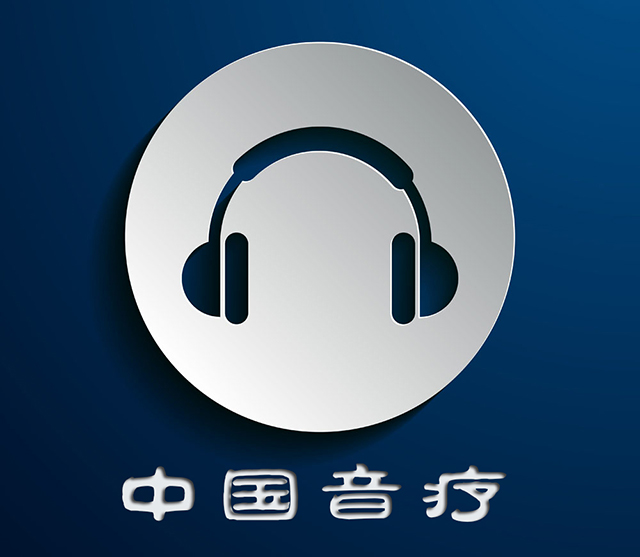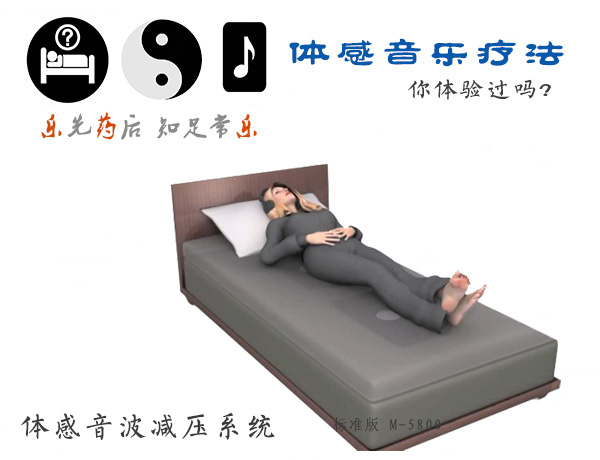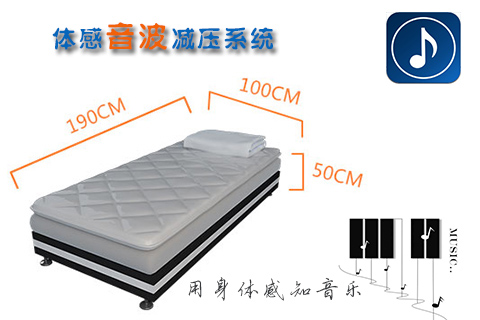Industry information
Frequency range of somatosensory Music Technology
At present, there are three kinds of somatosensory music technologies: full-band music (FFM) system, selective low-frequency (SLF) system and quantitative mechanical vibration (QMV) system. Full-band music systems have been proven to be effective in relaxing nerves and muscles and alleviating anxiety and pain. The system uses a single sound source and multiple loudspeakers or transducers to generate vibration to the whole body. Standard sound sources and power amplifiers are currently used (of course, sound sources can also be obtained from computers or other electronic instruments, but their vibration doses to the human body have not been measured).

Mr. Olav Skille, a Norwegian educator and clinical physician, has developed a musical somatosensory therapy device. His experimental frequency ranges from 30 to 120 Hz, of which 40 to 80 Hz is the most beneficial. Skilli conducted a 40,000-hour clinical trial of somatosensory music therapy, which proved that the frequency range was very effective in the treatment of autism, migraine, muscle cramps, cerebral palsy and other diseases. Petri Lehikoinen, a researcher and lecturer in music therapy and special education at the University of Helsinki, believes that 20-113Hz has a better therapeutic effect on musical somatosensation.
Kris Chesky, director of the Texas Center for Music and Medical Education and Research at the University of North Texas, found that music somatosensory therapy at a frequency range of 60-600 Hz at a specific amplitude was the best way to relieve pain. It is known that the vibration in this frequency range can stimulate the Pacinian globule, which distributes at the nerve end of the subcutaneous nerve. Its function is to regulate the sensation of pain, pressure and itching. Vibration in the frequency range of 60-600 Hz promotes pain relief, and Chesky found that 60-300 Hz contributes most to the therapeutic effect.

Studies have shown that vibration is effective in relieving pain in most areas of the body, and it works better when vibrating near pain areas.
History of somatosensory music therapy
Acoustic vibration has many applications in medical treatment, such as ultrasound for ultrasound imaging and lithotripsy treatment, low-frequency vibration for the treatment of muscle and joint pain in vertebral finger compression, pulse micro-current for improving therapeutic effect by acupuncturists, etc. Somatosensory music therapy, on the other hand, combines the above principles to form a therapeutic effect of vibration on the whole body, which is very effective in relieving stress and controlling pain.
Somatosensory music therapy appeared almost simultaneously in the United States and Scandinavia in the 1970s and 1980s. Olav Skille, a Norwegian educator and clinical physician, successfully developed a low-frequency music somatosensory therapy chair in the early 1980s. Petri Lehikoinen, a researcher and lecturer in music therapy and special education at the University of Helsinki, designed and developed a low-frequency music somatosensory instrument (called psychoacoustics instrument), which uses computation. The rhythmic low-frequency impulse vibration controlled by the machine makes certain parts of the body resonate to obtain curative effect.
Byron Eakin of the United States completed the development of music somatosensory equipment in 1985 and successfully commercialized the products of music somatosensory reclining chair and mattress.
These products are very practical and are designed for full-band music vibration with a single sound source. Kris Chesky designed a music shaking table in the late 1980s, which can detect the vibration frequency and amplitude of specific parts of the body, but this shaking table has not been commercialized. At present, most of the music somatosensory therapy devices widely used in the world are developed by Byron Eakin.
Musical somatosensory therapy and its application show that this non-drug and non-invasive therapy is very effective in relieving pain and symptoms, inducing relaxation and helping to restore the health process.
4. Principles of somatosensory music therapy
The principle of music therapy:
Music has a definite therapeutic effect on people's body and mind. According to the research, the unique melody and rhythm of some music can reduce blood pressure, slow down the speed of basic metabolism and breathing, and make the physiological reaction of people under pressure more mild. It is not new for western countries to apply music to medical system widely in various psychological and physiological treatments.
The therapeutic function of music, on the other hand, is to directly produce resonance effect on the body through the physical effect of music. Because sound is a kind of vibration, and the human body itself is composed of many vibration systems, such as heart beating, gastrointestinal peristalsis, brain wave fluctuation, etc. When hearing the vibration of music and resonance in the body, it will make the body secrete a physiological active substance, regulate blood flow and nerve, make people full of vitality and vitality.
In addition, music has an active and positive function. It is a way to enhance creativity and thinking, to make the right brain flexible, and to guide important alpha brain waves. The peculiar music rhythm and melody can make the left brain which we usually use in charge of language, analysis and reasoning rest; on the contrary, it can stimulate the right brain which is in charge of emotion, creativity and imagination, and has a strong effect on the improvement of potential abilities such as creativity and information absorption.

In the early nineteenth century, music had been used to promote sleep in patients. Doctors point out that the use of sleeping pills and tranquilizers can indeed be reduced by insomniacs listening to appropriate music. The rhythm of music can affect the human body. Compared with young people, there is a marked increase in neoadrenaline in the elderly - a hormone that has been confirmed in recent medical studies and is associated with the occurrence of sleep and the frequency of waking up at night. The scientific research of music promoting sleep has been confirmed in Germany, the United States and the Soviet Union. The American Medical Review Board has announced that most sleeping pills lose efficacy after two weeks of use. For these reasons, music therapy has been paid more and more attention and has been widely used by medical staff.
Although various studies use different kinds of music, their music has one thing in common: the rhythm of music is slightly equal to the rate of human heartbeat, and music with too fast or too slow rhythm is not suitable for promoting sleep. Too fast will make people nervous, too slow will make people suspense.
Medical experiments have proved that the type of music can affect the circulation of blood in the brain. Some music can increase the amount of blood in the brain and make the blood flow smoothly. Others, on the contrary, can reduce the speed of blood circulation and alleviate external stimulation. For example, when eating in a restaurant, soft music can make appetite and digestion go smoothly and fully enjoy the satisfaction and pleasure of meals. However, fast-tuned dances or strong marches will make the mood tense and affect the functions of the digestive system.
Not any pleasant music can achieve the effect of improving the soul! According to the empirical research of music psychologists in Germany and Japan, it is pointed out that if the music we listen to can not make us feel friendly, it can not achieve the effect of relaxing nerves and relieving stress. Brain alpha-brain waves dominate the stable mood of human body. By listening to psychotherapy music, it can effectively strengthen alpha-brain waves, inhibit or override other restless brain waves, so as to achieve the effect of relaxation and peace of mind.


